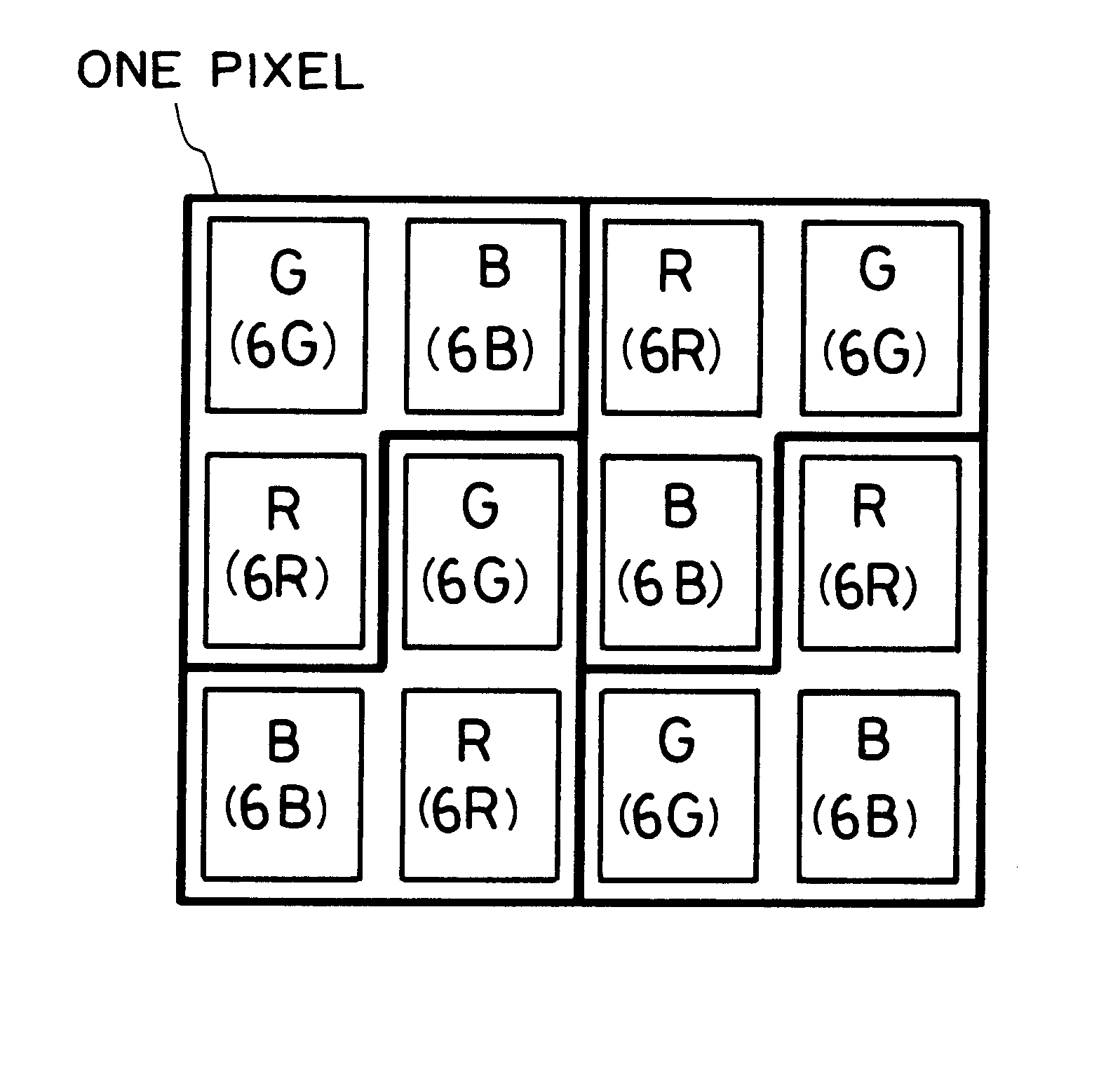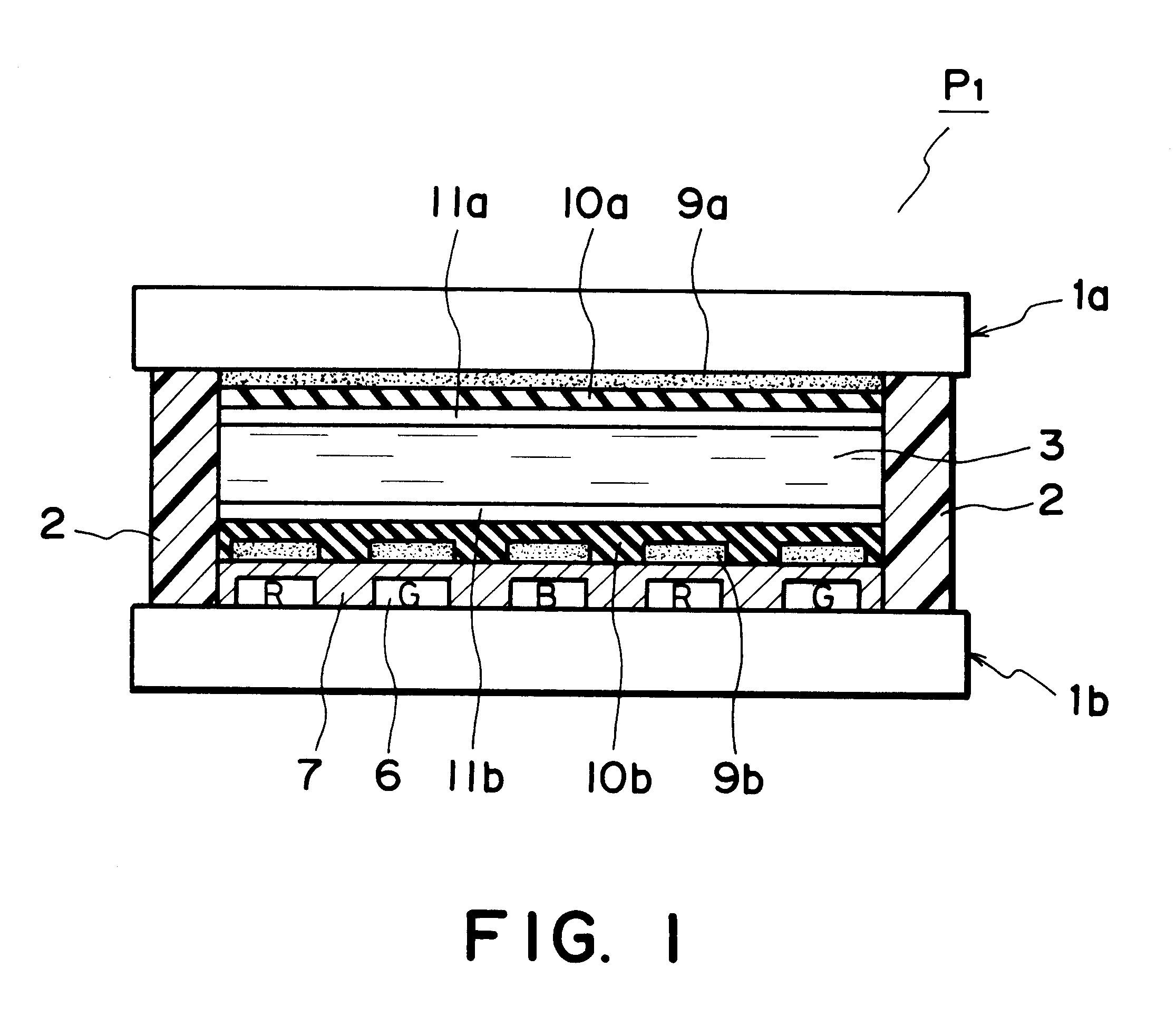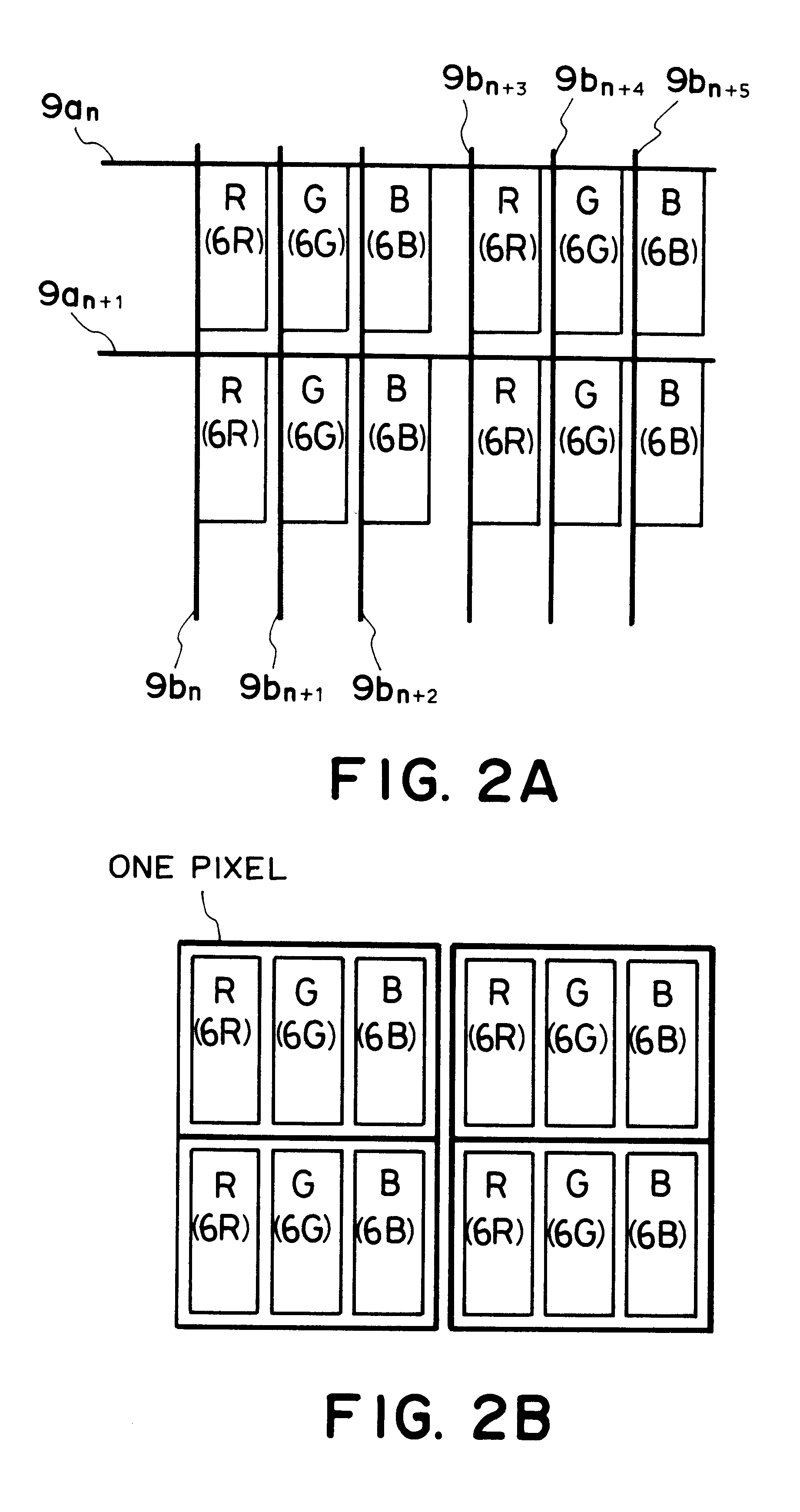Color display apparatus
a display apparatus and color technology, applied in the field of color display apparatuses, can solve the problems of posing a limitation in the increase of display density, posing a certain limit in providing an increased display density, and still insufficien
- Summary
- Abstract
- Description
- Claims
- Application Information
AI Technical Summary
Problems solved by technology
Method used
Image
Examples
example 1
In this Example, one pixel requires 2 data electrodes 9b (n=2) so as to satisfy 1
More specifically, as shown in FIG. 5A, for adjacent 3 scanning electrodes (a first scanning electrode 9a.sub.n, a second scanning electrode 9a.sub.n+1 and a third scanning electrode 9a.sub.n+2), first-color and second-color color filter segments 6R and 6G are alternately disposed along the first scanning electrode 9a.sub.n ; third-color and first-color color filter segments 6B and 6R are alternately disposed along the second scanning electrode 9a.sub.n+1 ; and second-color and third-color color filter segments 6G and 6B are alternately disposed along the third scanning electrode 9a.sub.n+2 ; so that as shown in FIG. 5B, one pixel is first-color and second-color color filter segments 6R and 6G along the first scanning electrode the first scanning electrode 9a.sub.n, and a third-color color filter segment 6B along the second scanning elect...
example 2
In this Example, one pixel requires 3 / 2 data electrodes 9b (n=3 / 2), satisfying 1
More specifically, as shown in FIG. 6A, first-color to third-color color filter segments 6R, 6G and 6B are disposed in this order along the first scanning electrode 9a.sub.n on the second scanning electrode 9b.sub.n+1, respectively, but with one color filter segment shifted along the second scanning electrode 9a.sub.n+1, so that the third color filter segment 6B along the second scanning electrode 9a.sub.n+1 is disposed adjacent to the first color filter segment 6R along the first scanning electrode 9a.sub.n ; whereby as shown in FIG. 6B, one pixel is composed of first color and second-color color filter segments 6R and 6G along the first scanning electrode 9a.sub.n and a third-color color filter segment 6B along the second scanning electrode 9a.sub.n+1, and another one pixel is composed of a third-color color filter segment 6B along the first scanning electrode 9a...
example 3
In this Example, one pixel requires 2 data electrodes 9b (n=3 / 2), satisfying 1
More specifically, as shown in FIG. 7A, first-color and second-color color filter segments 6R and 6G are disposed alternately along a first scanning electrode 9a.sub.n, and third-color color filter segments and disposed in succession along a second scanning electrode 9a.sub.n+1, while the third-color color filter segments 6B are designed to have an area which is a half that of each of the first-color and second-color color filter segments 6R and 6G. Further, one pixel is composed of first-color and second-color color filter segments 6R and 6G and two third-color color filter segments 6B. Consequently, 4 pixels are formed by 4 data electrodes 9b and 4 scanning electrodes 9a in this Example.
On the other hand, a liquid crystal panel is designed to have a diagonal size of 15 inches with a vertical / lateral ratio of 4 / 3 (a vertical size of 12 inches and a lateral size of 9...
PUM
| Property | Measurement | Unit |
|---|---|---|
| vision distance | aaaaa | aaaaa |
| colors | aaaaa | aaaaa |
| color | aaaaa | aaaaa |
Abstract
Description
Claims
Application Information
 Login to View More
Login to View More - R&D
- Intellectual Property
- Life Sciences
- Materials
- Tech Scout
- Unparalleled Data Quality
- Higher Quality Content
- 60% Fewer Hallucinations
Browse by: Latest US Patents, China's latest patents, Technical Efficacy Thesaurus, Application Domain, Technology Topic, Popular Technical Reports.
© 2025 PatSnap. All rights reserved.Legal|Privacy policy|Modern Slavery Act Transparency Statement|Sitemap|About US| Contact US: help@patsnap.com



